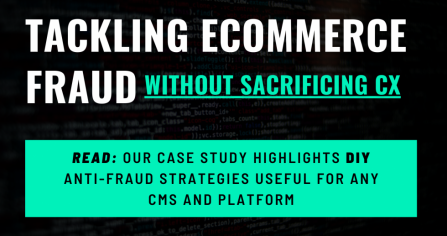-
Video: Automate Positive Google Business Reviews
Learn how to quickly automate Google reviews for your business, as well as your Facebook reviews, Trustpilot & more for free using Climbo.
-
Track File Downloads In Google Analytics 4 With Custom Events
A lot of marketers get a bit overwhelmed when trying to migrate their current workflow from Universal GA to the new Google Analytics 4, especially when it comes to custom tracking and custom events. With GA3, event tracking was pretty simple and straightforward, however, GA4 is more open-ended while lacking a lot of official documentation. The catch is that once you understand GA4, its role with Google Ads and Google Tag Manager, you’ll find yourself with many more options than you once had. That said, this quick-start guide will go over custom event tracking within Google Analytics 4, using Google Tag Manager and passing data layer parameters. Tracking File Downloads With Google Tag Manager and Google Analytics 4 Let’s get right into it and create a trigger in GTM that most are familiar with. Nothing is much different here, but I’ll go over the basics again. Whether it’s a CSV file or a PDF file you want to track, or a .DOCX or maybe a .EXE… the Google Tag Manager setup remains the same. As shown above, our basic trigger is Some Link Clicks, with our Click URL containing “.pdf”. Change the filetype you wish to track based on your […]
-
Create Quick & Free eCommerce Popups With Google Tag Manager
This is part one of our series on using Google Tag Manager to boost sales and conversions for eCommerce stores. To start, we’ll be touching on several uses of popups that can be quickly made with Tag Manager without bulky plugins, addons, or services. This quickstart guide will assume that you’re somewhat familiar with Google Tag Manager (GTM). If you aren’t, here’s a quick summary that GTM can do in regards to eCommerce. By Using Google Tag Manager For eCommerce Stores, You Can: Track and analyze customer behavior to find pitfalls or design flaws Implement popups, banners, slide-ins, and call to actions based on conditions Split test different design layouts, colors, or wording on crucial pages like Cart or Checkout And so much more without the need for expensive (and often slow) developers or paid plugins. One of the best features of GTM is that you can get as simple or complex as you want without much hassle and barely any coding knowledge required. Let’s start simple and overview conditional popups that could display a promo or coupon code. Example One: Flash Sale Popup Notification Let’s say your team suddenly becomes overstocked on a certain product and you need some […]
-
eCommerce Fraud Analysis & Prevention Strategies – 2021 Case Study
eCommerce fraud is something that most stores have dealt with and will continue to deal with for the foreseeable future. eCommerce fraud, sometimes called eCommerce carding, is a war between vendors and criminals, with each side creating and utilizing more advanced and sophisticated techniques each day. This case study will take a closer look at one of our partner’s eCommerce store and their six month battle with targeted and sophisticated fraud. While there are many types of eCommerce fraud, we will take a look at order fraud in this case study. What is Order Fraud in eCommerce (or Purchase Fraud, Carding Fraud)? Order fraud is one of the most widespread forms of cybercrime. Quite simply, it’s when a criminal uses stolen or unauthorized debit or credit cards to purchase products. Often, the fraudsters will ship the stolen merchandise to a ‘drop’ location, sometimes an empty home address or an oblivious associate to pick up his stolen goods. This leaves the merchant with numerous issues such as dealing with chargebacks, inventory issues, consumption of valuable time, and profit loss. Not All eCommerce Fraud Can Be Stopped If you’re running a high-volume online store, it’s probably safe to say fraud will […]
-
Multi-Step Checkout Benefits Over Single Page in eCommerce – Case Study
Using a multi-step or single-page checkout is often a hot debate in the eCommerce field. Many marketers claim a single page checkout cultivates the purchasing process onto a single page without too much distraction and limiting user page interactions. However, proponents of the multi-step are insistent that making the purchasing process “look” and “seem” as simple as possible. Over the years, many developers and marketers have begun to favor a multistep checkout approach versus a single page. Note: It’s important to remember your niche and understand your customer’s behavior when deciding which checkout style to use. We’ve seen multi-step checkouts implemented incorrectly, which caused more harm than good. In this case study, our partner is a national e-Commerce brand in the sports & outdoors industry. When A Single Page Checkout Is Better Than Multi-Step There are, of course, cases where a single page has more benefits. Before we dive into the data, we’ve found single page checkouts perform better when: You’re selling digital services or goods that don’t require as many fields. There’s no focus or interest in repeat purchases or customer retention. Your target demographic leans much older in age. Multi-Step Checkout Behavior Analysis These results are based on […]
-
Conducting Competitive Analysis for your Business
It is important to research your business competitors as it helps create an understanding of the knowledge of the industry trends and the knowledge to
-
SEO Standards
When it comes to the success of a website, search engine standards and practices are parts of many factors that will increase search engine rankings. The most common search engine practices are on-site optimization, keyword researching, and building backlinks. There are thousands of ways to practice search engine optimization to improve your site. Search engine standards are the relationship made between the website and the search engine. This relationship benefits both sides as the search engine receives permission from the website to gather data from the website and the website receives referral traffic from the engine. The relationship between website and search engine is tenuous at best and often breach each other’s contracts. When it comes to search engine optimization there are three main players. There are the clients who are the owners of the website, the search engine, and the search engine optimization firms. There is a lack of formal definition of what search engine optimization is and everyone that works in the industry has their own idea and definition. The lack of industry standards for search engine optimization reduces the credibility of many people who work in the industry. There are search engine models created in the past […]
-
4 Ways to Increase Audience Engagements
One of the most important things for digital marketing is to increase engagement with website visitors. Audience engagement has been around for decades but in the current
-
Apple Search Engine – Oh the Possibilities!
Google Search vs. Apple Search? Google certainly needs some competition in the search engine market. Rumors about development of an Apple search engine have









